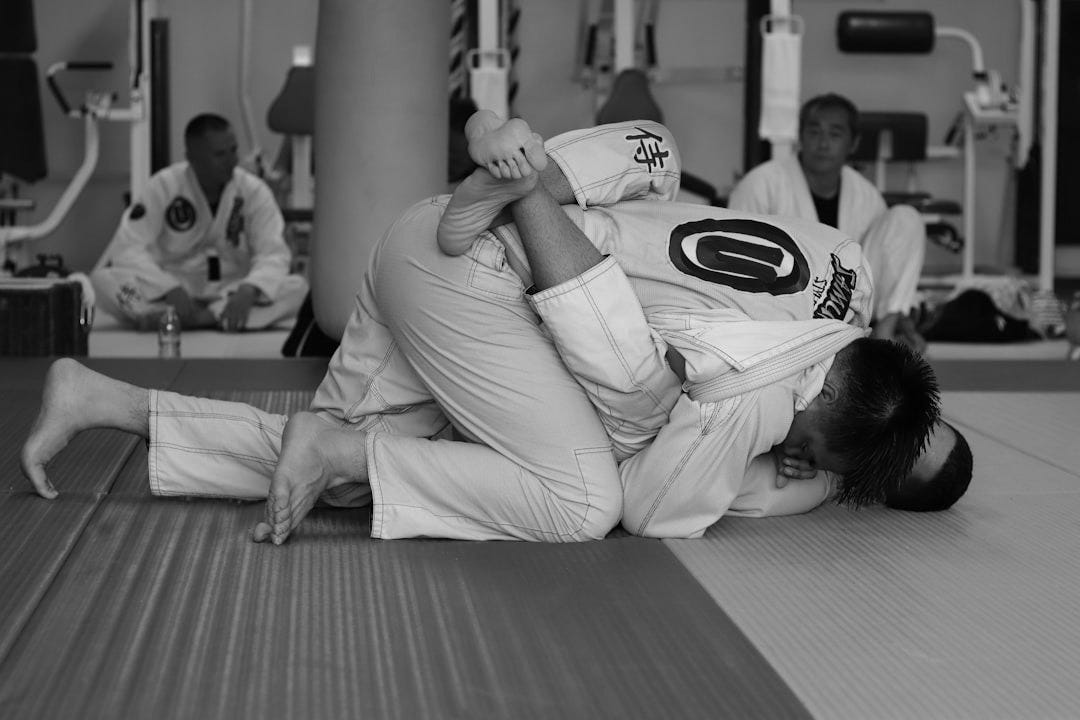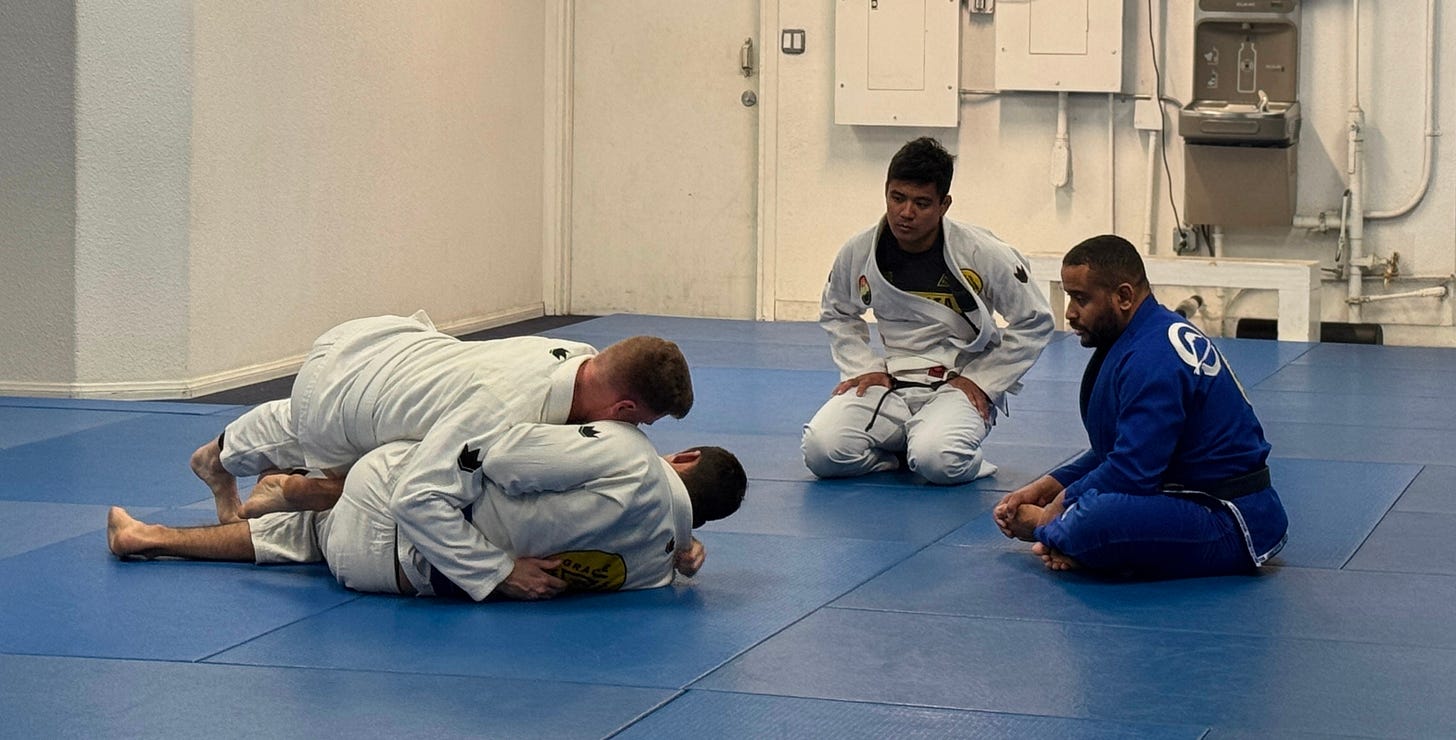
I’ll admit, I’ve never formally been taught how to teach.
I have however made my share of mistakes, ultimately figuring things out through trial and error.
Where I was fortunate was that when I started teaching alone, it was with the Kids Program. It allowed me to build an effective approach to instruction that I then applied across all skill levels.
Table of Contents
Short and Clear Cues (Less is More)
Finding The Moments
Driving Where We Go
Scale To The Student’s Level
Short and Clear Cues (Less is More)
While in the middle of a roll, I don’t want to ruin someone’s experience. That sparring time is the most fun part of class, but I still need to coach when necessary.
Deep breath. Don’t start on your butt. Be first. - When I speak, it’s usually in short s bursts. My hope is to nudge my student to remember something that we’ve covered in the past. Think of it similar to feeding an actor or actress part of their line, in order to get them going again.
Allow for Pauses - Let your students process the situation that they find themselves in, along with how they are going to proceed. During this conversation with themselves, I don’t want to steamroll their attempts and but in. The newer the student, the more of a pause.
Provide the Consequence - When my nudges don’t get them moving the way they should, I apply a consequence. If they’re not properly framing for example, I apply pressure. When their base is off, I sweep them. When they’re don’t posture when necessary, I throw a submission up. The degree to which I do this, again, will depend on the student’s understanding of Jiu-Jitsu.
Finding the Moments
We never want to provide the answers for our students every step of the way. The challenge is understanding when to nudge and when to give them that needed space.
When To Speak - I nudge or speak when I see a pause in the action that’s longer than it should be. This will obviously depend on the skill of the student. A White Belt will obviously have a longer pause, while a Brown Belt student may not. Additionally, I’ll butt in when I notice the student is making the same mistake.
When To Be Silent - When my student is actively pursuing a solution, even if it’s “wrong,” I let them work. Dialing back my response in order to narrow the skill gap for them. My response won’t completely shut them down, but I will create issues while encouraging exploration.
Driving Where We Go
I will often replay what I want them to remember throughout the roll.
For example, if I notice that they can’t passing the guard correctly, perhaps they’re allowing me to gain the underhook. I’ll see their attempt through, then escape while using the underhook, reestablish the guard, and force them to redo the assignment. I want them to address that specific issue.
If the student doesn’t catch on, I’ll highlight the issue by quietly saying, “What am I doing that’s bugging you most right now?”
They might say, “You have the underhook.”
“OK, what are you going to do to correct the issue?”
Scale To The Student’s Level
Lastly, we have to scale everything mentioned above to the level of the student.
As students advance, I’ll do less of any one of these, ultimately transitioning to giving zero assistance and instead talking trash on occasion.
When you’ve reached the point of me talking a little trash, it means you’ve become a bit of a threat.
Congratulations.
Final Thoughts
At the end of the day, each student is different. Some you can coach while in the roll, but others may prefer the correction after the fact. Learn what works best for each specific student.
DFM Coaching is dedicated to helping you overcome mental hurdles and achieve your full potential in BJJ. Whether through in-person instruction, seminars, private lessons, remote coaching, or video analysis, I provide personalized support tailored to your needs. Keep pushing forward, and let’s grow together!



